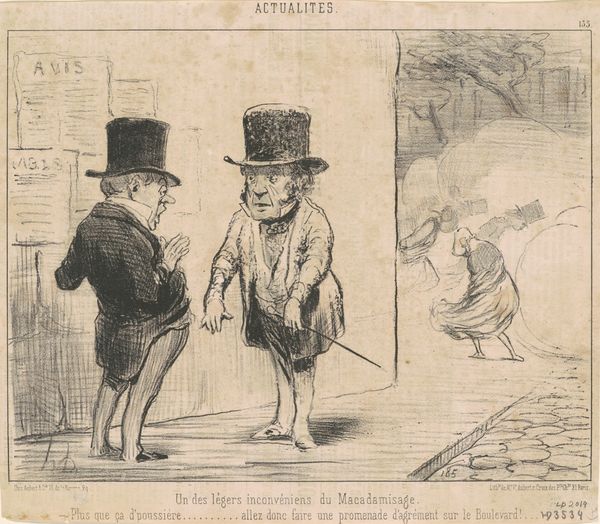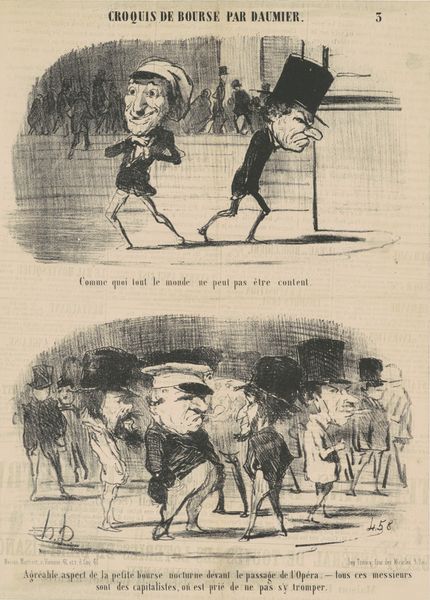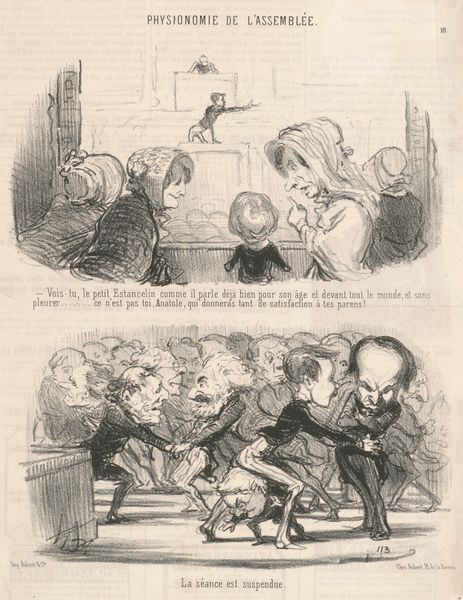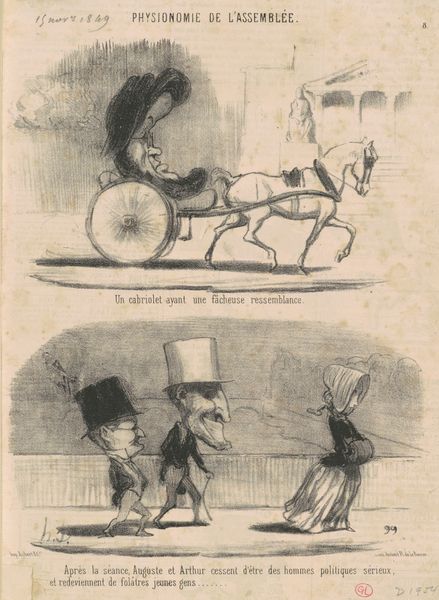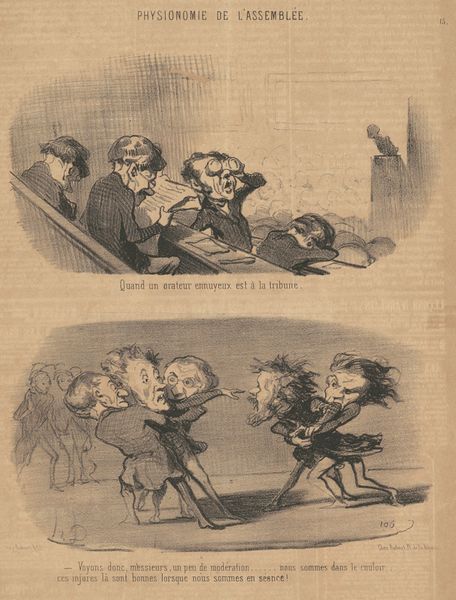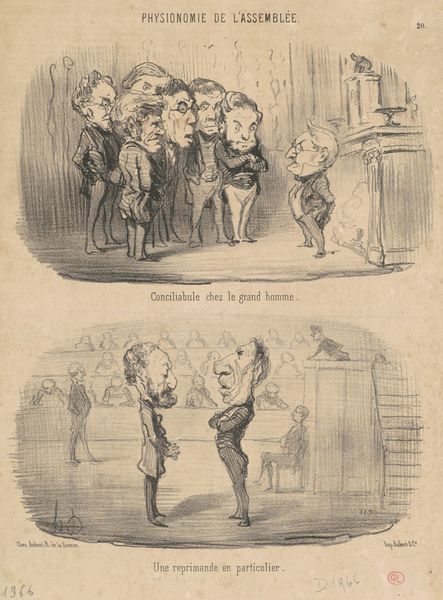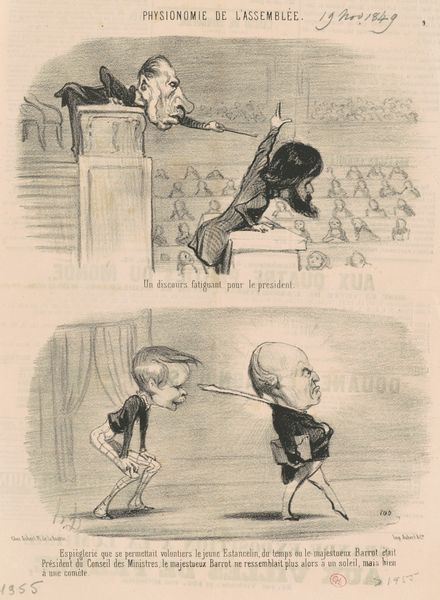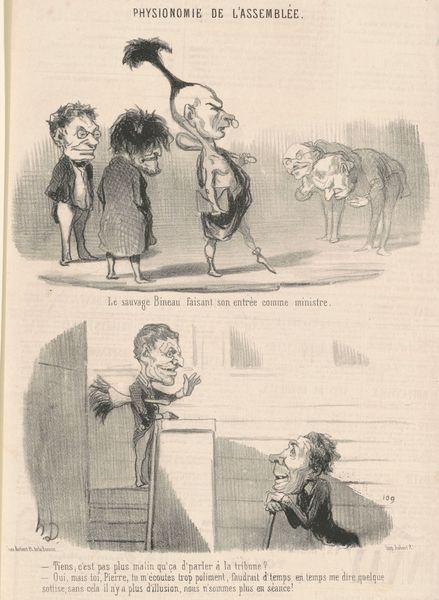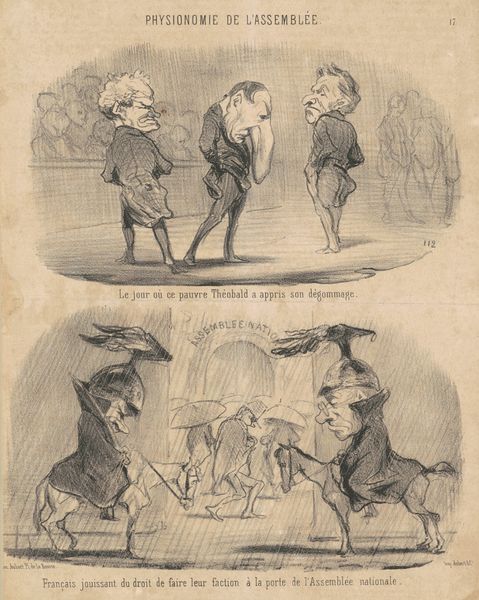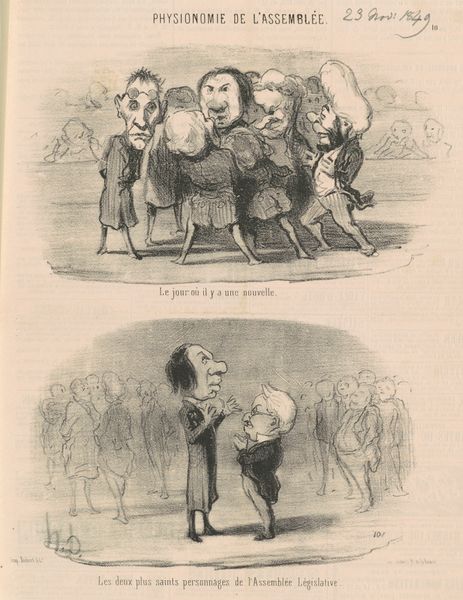
lithograph, print, pencil
#
lithograph
# print
#
caricature
#
pencil sketch
#
figuration
#
romanticism
#
pencil
#
genre-painting
#
history-painting
Copyright: National Gallery of Art: CC0 1.0
Curator: This is a lithograph by Honoré Daumier, created around the 19th century. Its title translates to "A solicitor watches for the arrival of the savage Bineau, Minister of Public Works." Editor: My initial reaction? It's dripping with satire. The grotesque exaggerations in the figures feel simultaneously amusing and cutting. What exactly are we looking at? Curator: Daumier was a master of caricature. This print appears to depict a political scene. The upper register seems to show a supplicant awaiting Minister Bineau, visually characterizing Bineau, rather cruelly, as animalistic and crude. The lower portion offers a depiction of servitude during inclement weather. Editor: Looking at the lower section, you really get a feel for the production here. The figures appear quickly sketched; you can practically see Daumier’s hand moving rapidly across the lithographic stone to suggest motion and the teeming masses of bodies. And it conveys a very particular class dynamic, I think, of the 'big man' in question and the subservient person. Curator: The “savage Bineau” moniker is quite striking. What societal anxieties do you think it targets? Consider how animalistic or "savage" tropes have historically been utilized. Editor: Perhaps the implication is that in the rush to attain and preserve power, these ministers abandoned all decorum; and it feels really blunt in its judgement of what the political system can degrade people into doing. But what of the other symbols or repeated figures: Do these tell us of similar instances elsewhere at that time? Curator: It does. We need to read this lithograph in its historical context as something of a cultural commentary, an effort to mock and undermine certain established icons in governance using caricature as a tool. We have to reflect on lithography's inherent reproducibility to see this artwork as having tremendous significance due to the audience it would have achieved. Editor: Yes, that mass dissemination shifts the way we have to regard this artwork; lithography created prints available for the ordinary citizens who would recognise such lampooning for figures with established symbolic and political meaning. This becomes an almost dangerous act of cultural critique. I'm just so stuck on those stark material contrasts here; it's striking how the material both amplified and constrained Daumier’s scathing indictment of political life.
Comments
No comments
Be the first to comment and join the conversation on the ultimate creative platform.
